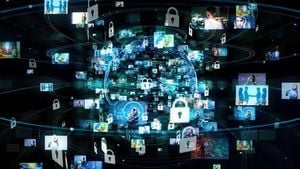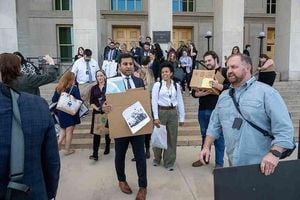NASA astronaut Sunita Williams, after her extraordinary seven-month mission aboard the International Space Station (ISS), is confronting the startling reality of having forgotten how to walk. This unexpected challenge serves as a deep reminder of the physical toll extended space missions can take on astronauts, raising pressing questions about the impacts of prolonged weightlessness as the world looks toward ambitious future space explorations.
Initially, Williams and fellow astronaut Butch Wilmore anticipated spending just a month in zero gravity. Their mission aboard the Starliner spacecraft took an unexpected turn, leading to extended isolation amid technical difficulties and safety checks related to the spacecraft. During this time, Williams confessed, “I’ve been up there long enough trying to recall what it felt like to walk.” The sensation of weightlessness, meant to be liberatory, morphed instead to one of disconnect from the Earth and its comforts.
This gradual disconnection raises concerns. If such fundamental bodily functions as walking can be affected, one must wonder what hazards future astronauts face during long-term missions to Mars and beyond. Williams’ experience is not merely anecdotal; it highlights the urgent need for advancements in space medicine and rehabilitation technologies.
After spending months floating without ever having the chance to sit down or lay down, she finds herself grappling with the loss of basic human sensations. The thought of readapting to Earthly life has stirred questions about how thoroughly astronauts should prepare for their return home. It contrasts sharply with the breathtaking allure of space. The visions of Earth's landscapes, simply walking on solid ground, everything once taken for granted now feels like distant memories, underscoring the emotional strain of isolation.
“They’ve been waiting for months, virtually abandoned in space,” remarked former U.S. President Donald Trump about the situation surrounding Williams and Wilmore, who are still aboard the ISS due to delays from major safety concerns with the returning spacecraft. Trump framed the narrative as one of neglect, calling on tech mogul Elon Musk and SpaceX to undertake what he labeled as a rescue mission. Musk duly stepped up, asserting, “We’ll bring them home as soon as possible,” drawing significant media attention.
The narrative, laden with political undertones, prompted various discussions around astronaut safety and the government's role amid the growing risks of space exploration. White House officials, on one hand, denied any negligence, emphasizing their commitment to the astronauts' well-being.
Beyond the politics and technical challenges, Williams has strived to maintain familial ties throughout her isolation. She describes talking to her mom practically every day to keep their connection alive, showing how personal bonds can provide solace amid the isolation. “What was meant to be a short mission has become a test of resilience—not only for my physical strength but also for my emotional endurance,” Williams shared, reminding the public of the human experience at the forefront of space travel.
Concern for the mental health of astronauts during extended missions has become more pressing as studies show how prolonged isolation and disconnection from family can affect performance and well-being. NASA continues to integrate mental health support strategies such as virtual reality experiences for stress management and enhancements to communication with loved ones back on Earth. Yet, the impact of physical adaptation remains unpredictable and troubling.
The missed opportunities of this extended mission also resonate with broader themes surrounding the future of human space exploration. Williams's remarkable story poses significant questions about how we will adapt and respond to life beyond Earth. Advances are being pursued, and more focus is being laid on creating environments more conducive to psychological and physical well-being, particularly for missions lasting well beyond current durations.
The sample of human experience, as illustrated by Williams and her mission, serves as stark evidence of the interplay between exploration and emotion. It is not just about the destination but also about the astronauts’ triumphs and tribulations as they represent human courage against the isolation of space. Navigations of these challenges may well dictate the future of deep space missions and our quest for sustainable human presence beyond our home planet.
With the prospect of sending astronauts to Mars looming large, it's clear Williams' experience should inform trajectories of space exploration—balancing the marvels of discovery with the intrinsic human need for connection, both to Earth and to one another.



